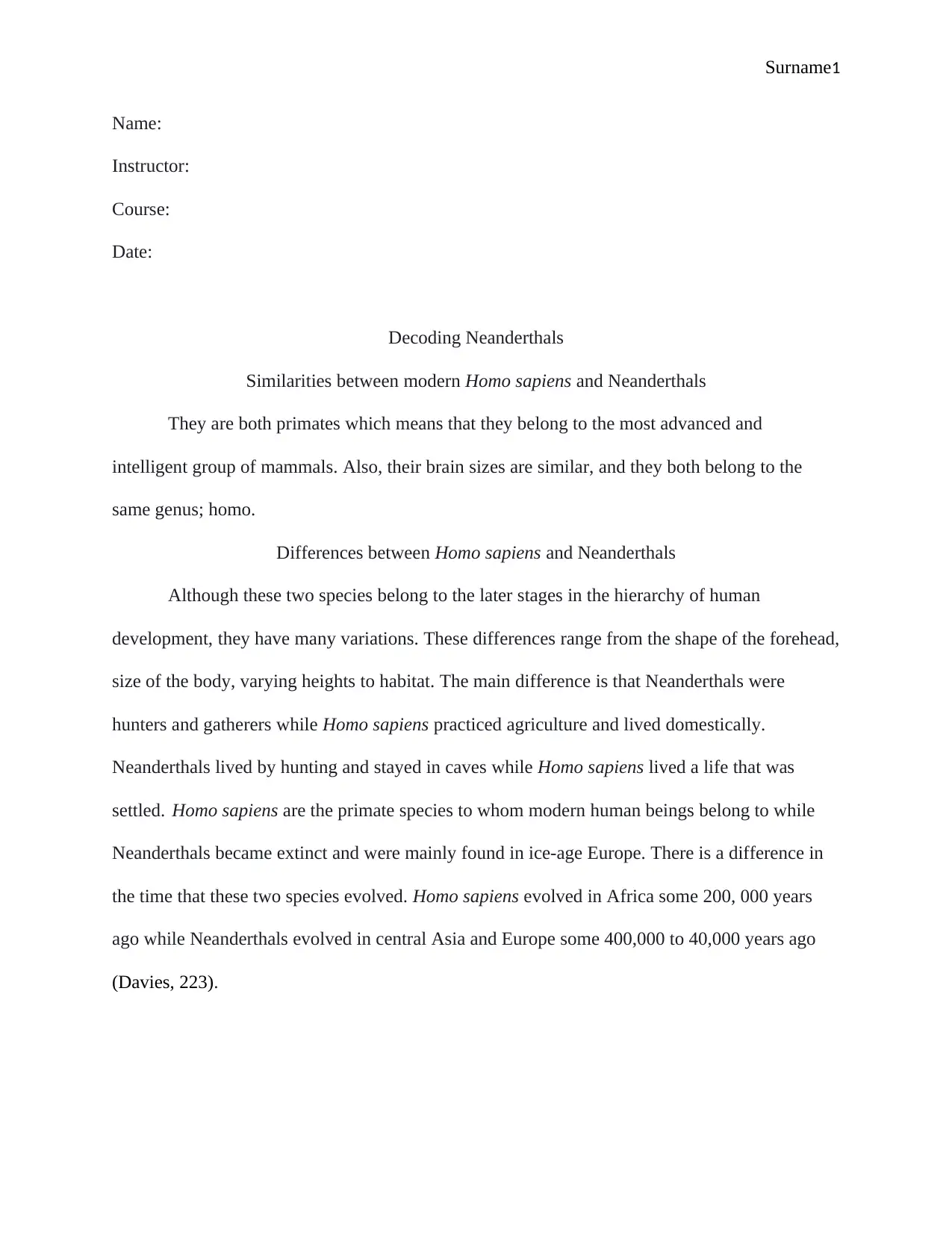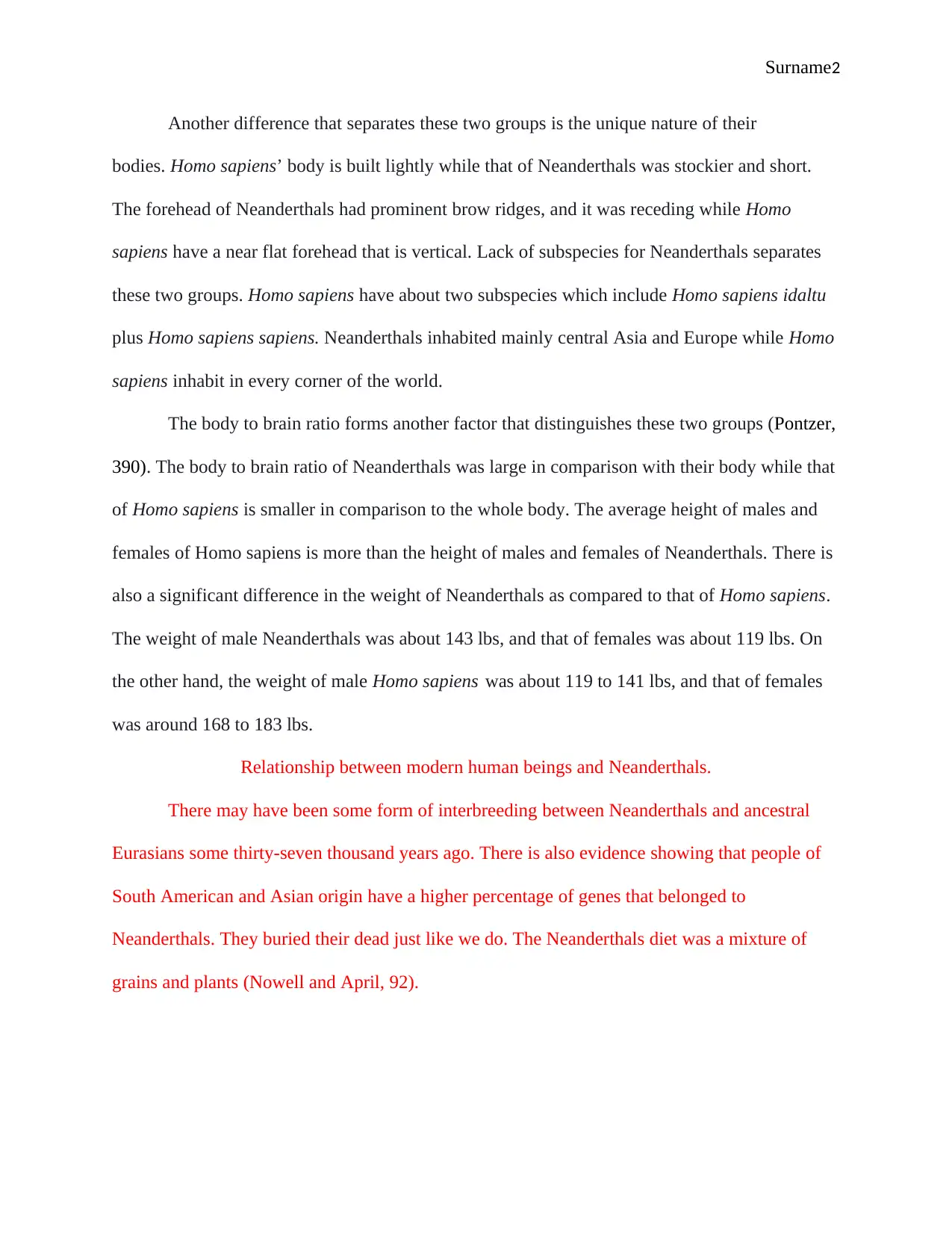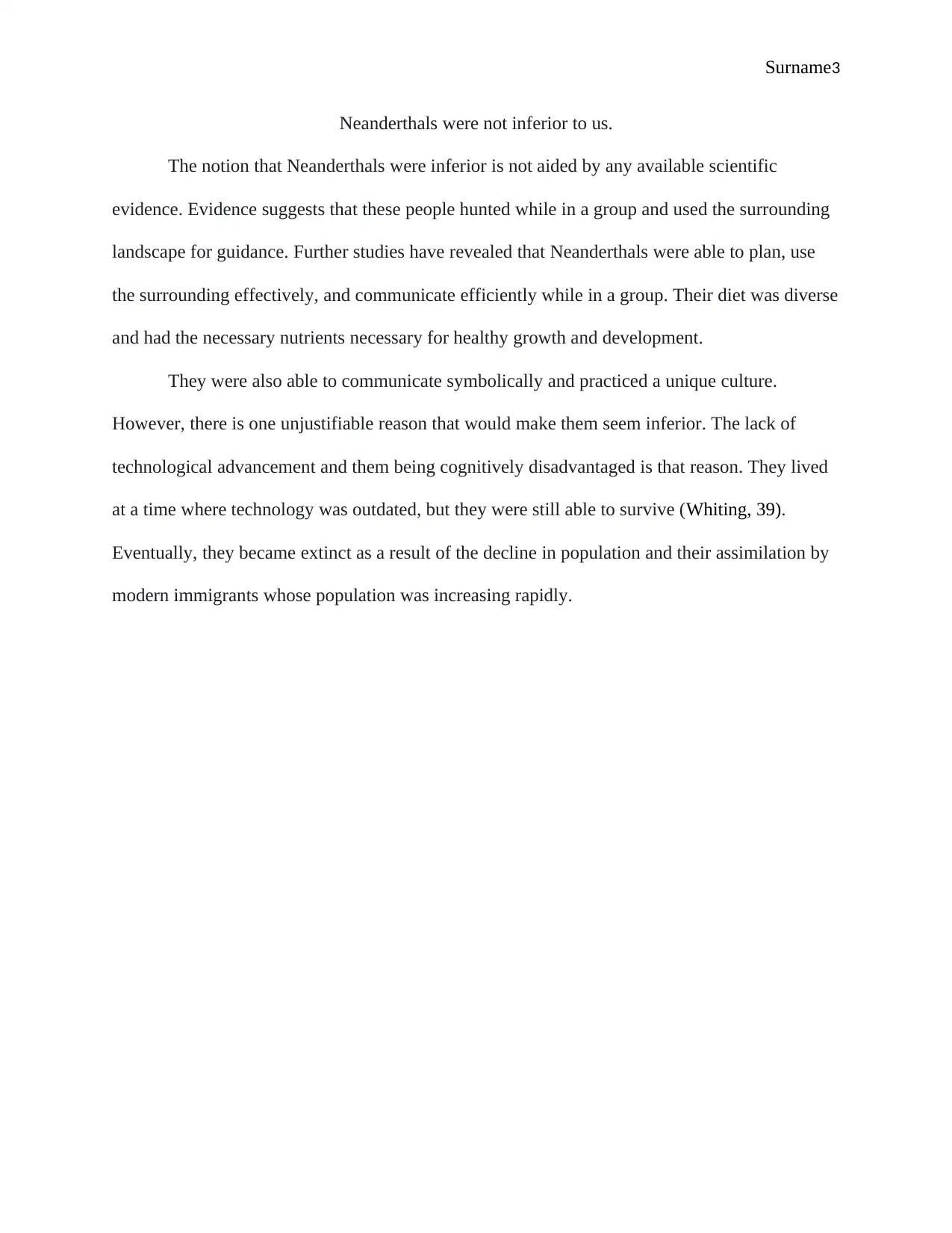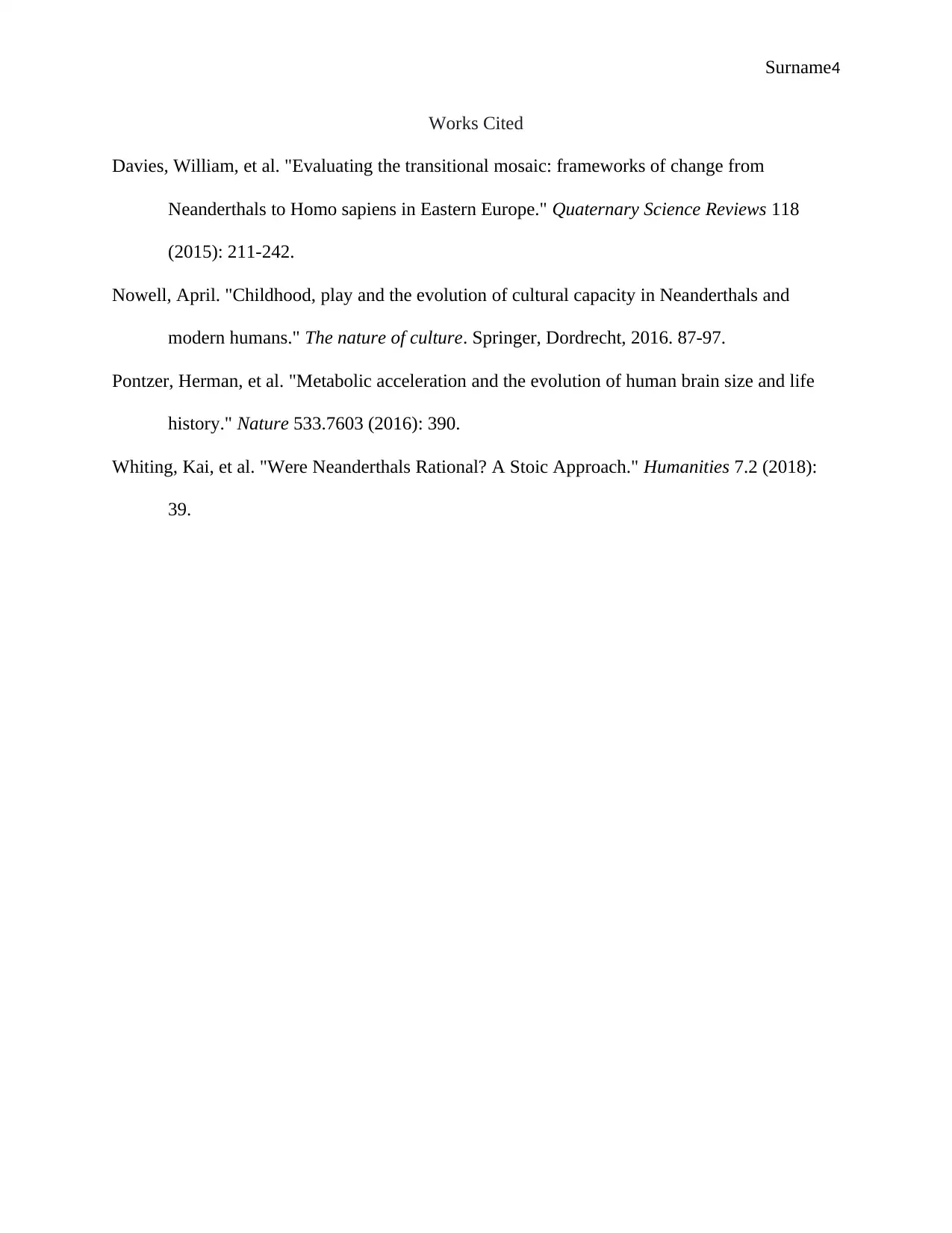Anthropology Essay: Neanderthals, Homo Sapiens Comparison
VerifiedAdded on 2022/11/27
|4
|819
|381
Essay
AI Summary
This essay provides a comprehensive comparison between Neanderthals and modern Homo sapiens. It explores the similarities in their primate classification, brain size, and genus. The essay then contrasts the two species, detailing differences in forehead shape, body size, height, and habitat, highlighting that Neanderthals were hunter-gatherers while Homo sapiens practiced agriculture. It also notes the differences in the time of evolution, body structure, and the body-to-brain ratio. The essay further discusses the potential interbreeding between Neanderthals and ancestral Eurasians, and their shared practice of burying the dead. It also examines the Neanderthals' diet and debunks the notion of their inferiority, emphasizing their group hunting skills, planning abilities, communication, and diverse diet. The essay attributes their extinction to population decline and assimilation, and concludes by summarizing the key distinctions between the two species.
1 out of 4






![[object Object]](/_next/static/media/star-bottom.7253800d.svg)